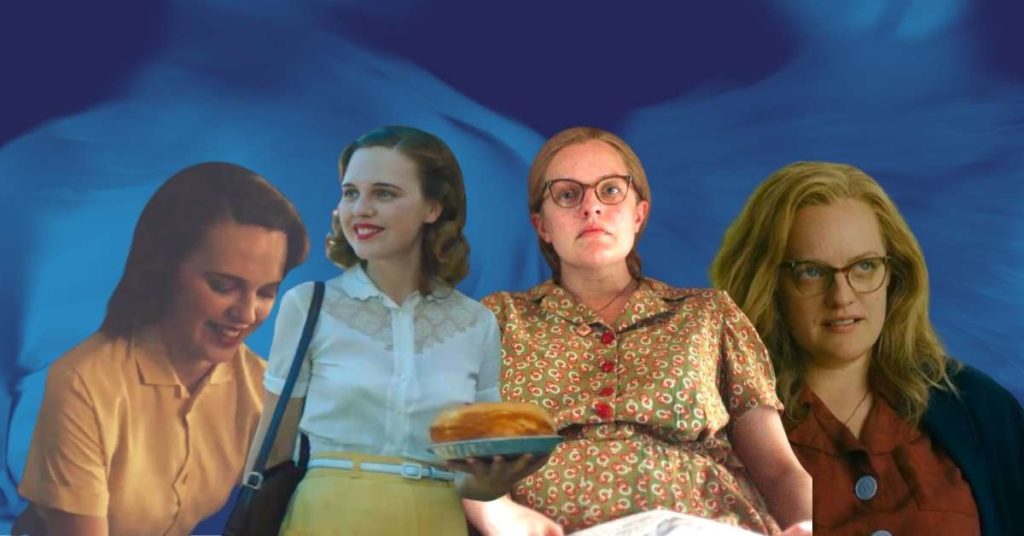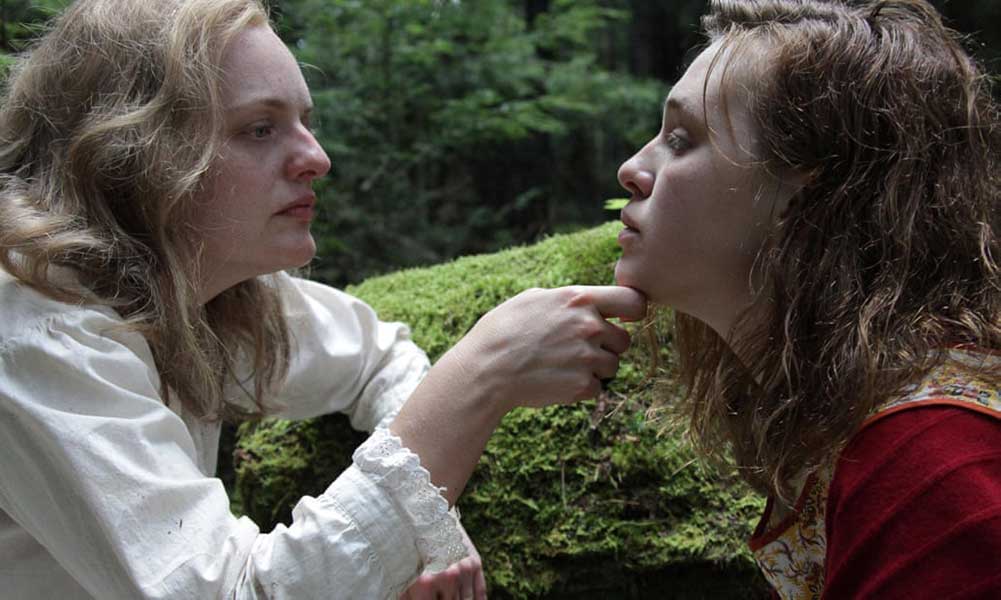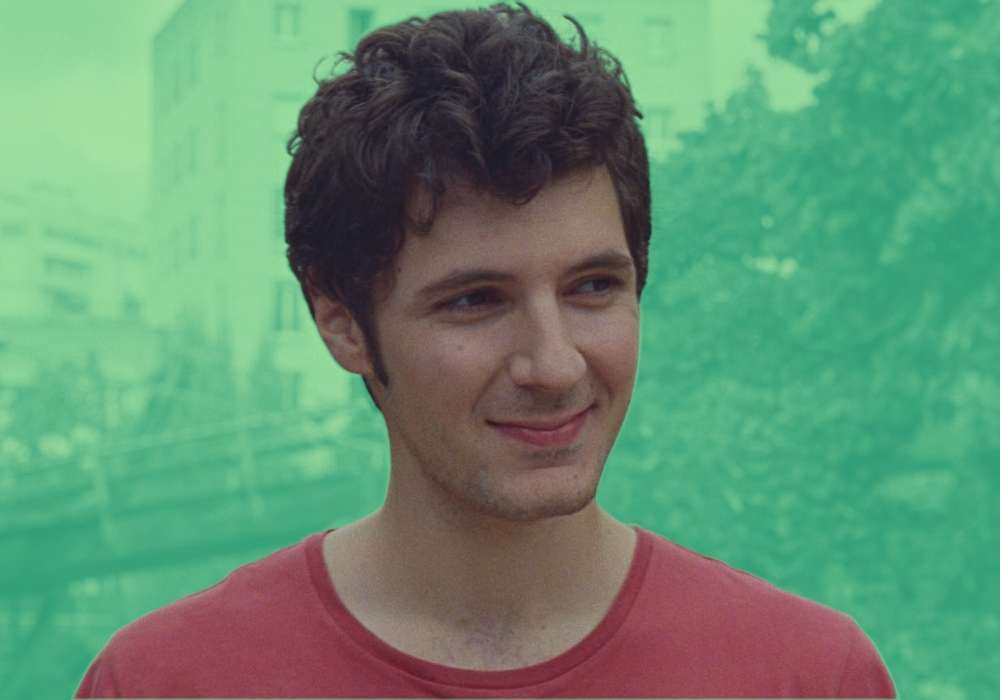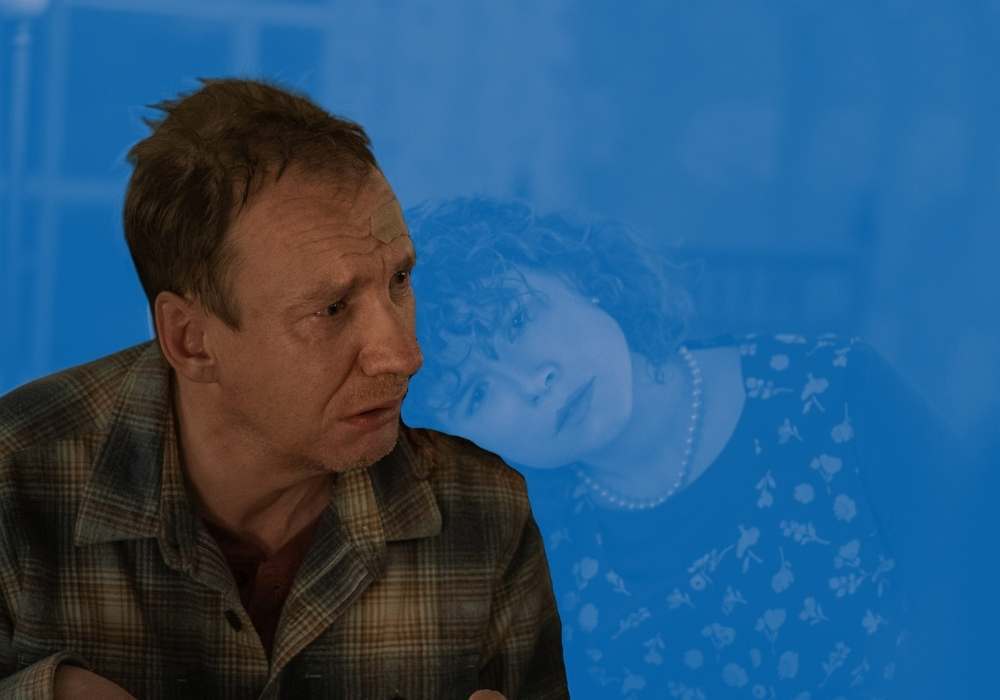Amela Baksic’s costumes aid in setting the various moving parts of Shirley, especially its female characters, in rotation around one another.
Listen to our podcast episode about Shirley and portraits of female artists.

Discover one film you didn’t know you needed:
Not in the zeitgeist. Not pushed by streamers.
But still easy to find — and worth sitting with.
And a guide to help you do just that.
Amela Baksic’s costume design aids Josephine Decker in setting the various moving parts of Shirley, especially its female characters, in rotation around one another. The sun in the centre is Rose (Odessa Young), the protagonist, and the planets that dance around her include Shirley (Elisabeth Moss), Paula (a missing college girl, who is so amorphous, we never even see her face) and the present college girls, who intrude on both Rose and Shirley’s lives (by having affairs with their husbands).
At times, Rose is more aligned with Shirley (who is much older than her) and at other times, with the college girls, who are technically her contemporaries. Rose enters the film in the exact shade of yellow that people tend to paint nurseries when they’re trying to avoid ‘boy’ or ‘girl’ colours. It’s an insipid, bland and entirely non-threatening colour — fitting for Rose seeming like a “good little wifey, good little Rosie” at this early stage. Rose is pregnant and no one knows, except Shirley, who intuits this fact with her “witchy” powers immediately.

Despite Rose being only nineteen, the same age as the college girls, her costuming is more what you would expect from a middle-aged housewife. Ironically, Shirley, who in fact is a middle-aged housewife, does not dress like one. When Rose visits the campus where her husband, Fred (Logan Lerman), works, she passes a tree full of “nymphs” — young, beautiful college girls in bright jewel-tones. They are probably doing something fairly innocuous, like practicing a dance or drama piece, but the way they are shot by Sturla Brandth Grovlen and costumed by Baksic makes them seem much more mysterious and threatening. They are like a coven performing a sacrifice or conjuring curses against Rose. These young women are already a thorn in Shirley’s side and will soon be for Rose, too.
In one of the most significant scenes of the film, Shirley sends Rose on a mission to find out more information about the missing Paula, who has inspired Shirley’s latest novel. When Rose arrives on campus, the “’nymphs”’ pour out of one of the buildings, wearing mostly bright primary colours, contrasted with Rose’s dowdy brown. Their youth and vitality are juxtaposed with the fact that Rose has just been scrubbing stairs and is doing the bidding of a strange older woman.
Shirley may be agoraphobic, and therefore, tied to her house, but this does not mean she conforms to dressing like a conventional house wife (she’s a Captive Queen, as one of Tamar-Kali’s tracks is named, the Queen of her Gothic castle) and her playful costuming reflects this. She appears in a variety of brightly coloured and excellent blouses — from a black one covered in pink and purple ticker-tape to a much-coveted mallard shirt — which hint at her mischievous and eccentric side. Her motivation in dressing like this is not to appear younger or to align herself with the college girls, whom we also see in bright colours.
But when she does summon up the courage to attend a party, Rose helps her pick out an outfit. Shirley has a panic attack in the dressing room, suggesting that perhaps there is a small part of her that may be insecure about how she will be viewed and judged by others. Once at the party, she clearly decides, “screw it,” and behaves especially naughtily, while wearing her new outfit of a lemon-yellow skirt and a blouse with primary-coloured exotic flowers. She sticks out like a sore thumb, compared to the other ladies in their elegant cocktail dresses. Shirley sits on a hideous yellow-and-blue striped couch (which clashes with her outfit, suggesting that she does not belong there) and deliberately pours red wine onto it, as an act of protest. Shirley is rebellious to the last.

The most well-known scene from the film has Shirley in a white nightgown and Rose in a red cardigan, with a blanket of bright green moss behind them, as she tells Rose to eat a death cap mushroom. They look like Snow-White and Rose-Red from the Grimm Fairytale, adding to the sense that something ancient and mysterious is passing between them. Poor Rose arrives at Shirley’s home looking like the prim-and-proper housewife but changes drastically by the end: her edges become less defined, like the missing girl, Paula. In Shirley’s visions of Paula, she has a red coat and red hair, standing out in the forest as if she doesn’t belong there; she should not be there. When Rose enters the same trail where Paula disappeared at the end, she is wearing green and blue, perhaps suggesting that this is the ending she was destined for. Rose spends the film fixated on two other women, and in the process, loses herself.
You could be missing out on opportunities to watch great films like Shirley at virtual cinemas, VOD, and festivals.
Subscribe to the Seventh Row newsletter to stay in the know.
Subscribers to our newsletter get an email every Friday which details great new streaming options in Canada, the US, and the UK.
Click here to subscribe to the Seventh Row newsletter.




